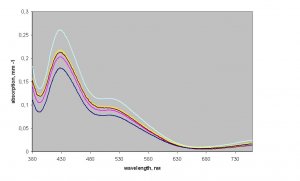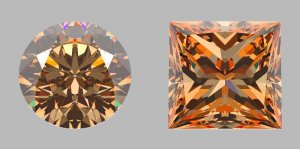RE: Hasps
Thanks for the reply Garry.
In that I was not all that excited with the first version and supposedly having to buy multiple copies of the software, what would happen if I tried it only to find the same results.
If an upgrade is $ 50.00 and I could upgrade it on a computer which doesn''t have my original version, I''d try that.
As to the hasps....my Sarin thingy has a hasp... I think it goes into a USB port? I guess this means that if I want to use it on a different computer I have to crawl around on the floor, move the computer where I could take it out and plug it in another?
Plus I am a bit concerned with compatibility with the other haspie things I have
or does the hasp version come with more than one hasp that you don''t have to be crawling around the floor to change?
I already have a ton of USB thingies connected to CPU''s, multiple added thingies and keyboards, I already have a rat''s nest of wires living on the floor.
___________________
As for my previous problems with the settings, when I tried it - even though I locked in the input setting thingy, it still made changes to the previous entries I put in. The measurements I used came from the Sarin, so I would assume my numbers were "pure" as to existing. But my reports have always had "all the numbers" rather than averages, and of course DC didn''t accomodate putting in the individual numbers that varied at that time.
Maybe with it taking the data from the Sarin Scan that has changed, but I guess I want to know I was looking at the results from accurate facet by facet measurements, rather than an average.
I have a way of seeing the light exit paths that aren''t estimated or calculated and actually are done seeing the actual light in light out type view.
I am curious to see if the calculations really do match the real world result. I have a long way to go with the development of this.
Thanks for the reply Garry.
In that I was not all that excited with the first version and supposedly having to buy multiple copies of the software, what would happen if I tried it only to find the same results.
If an upgrade is $ 50.00 and I could upgrade it on a computer which doesn''t have my original version, I''d try that.
As to the hasps....my Sarin thingy has a hasp... I think it goes into a USB port? I guess this means that if I want to use it on a different computer I have to crawl around on the floor, move the computer where I could take it out and plug it in another?
Plus I am a bit concerned with compatibility with the other haspie things I have
or does the hasp version come with more than one hasp that you don''t have to be crawling around the floor to change?
I already have a ton of USB thingies connected to CPU''s, multiple added thingies and keyboards, I already have a rat''s nest of wires living on the floor.
___________________
As for my previous problems with the settings, when I tried it - even though I locked in the input setting thingy, it still made changes to the previous entries I put in. The measurements I used came from the Sarin, so I would assume my numbers were "pure" as to existing. But my reports have always had "all the numbers" rather than averages, and of course DC didn''t accomodate putting in the individual numbers that varied at that time.
Maybe with it taking the data from the Sarin Scan that has changed, but I guess I want to know I was looking at the results from accurate facet by facet measurements, rather than an average.
I have a way of seeing the light exit paths that aren''t estimated or calculated and actually are done seeing the actual light in light out type view.
I am curious to see if the calculations really do match the real world result. I have a long way to go with the development of this.













300x240.png)